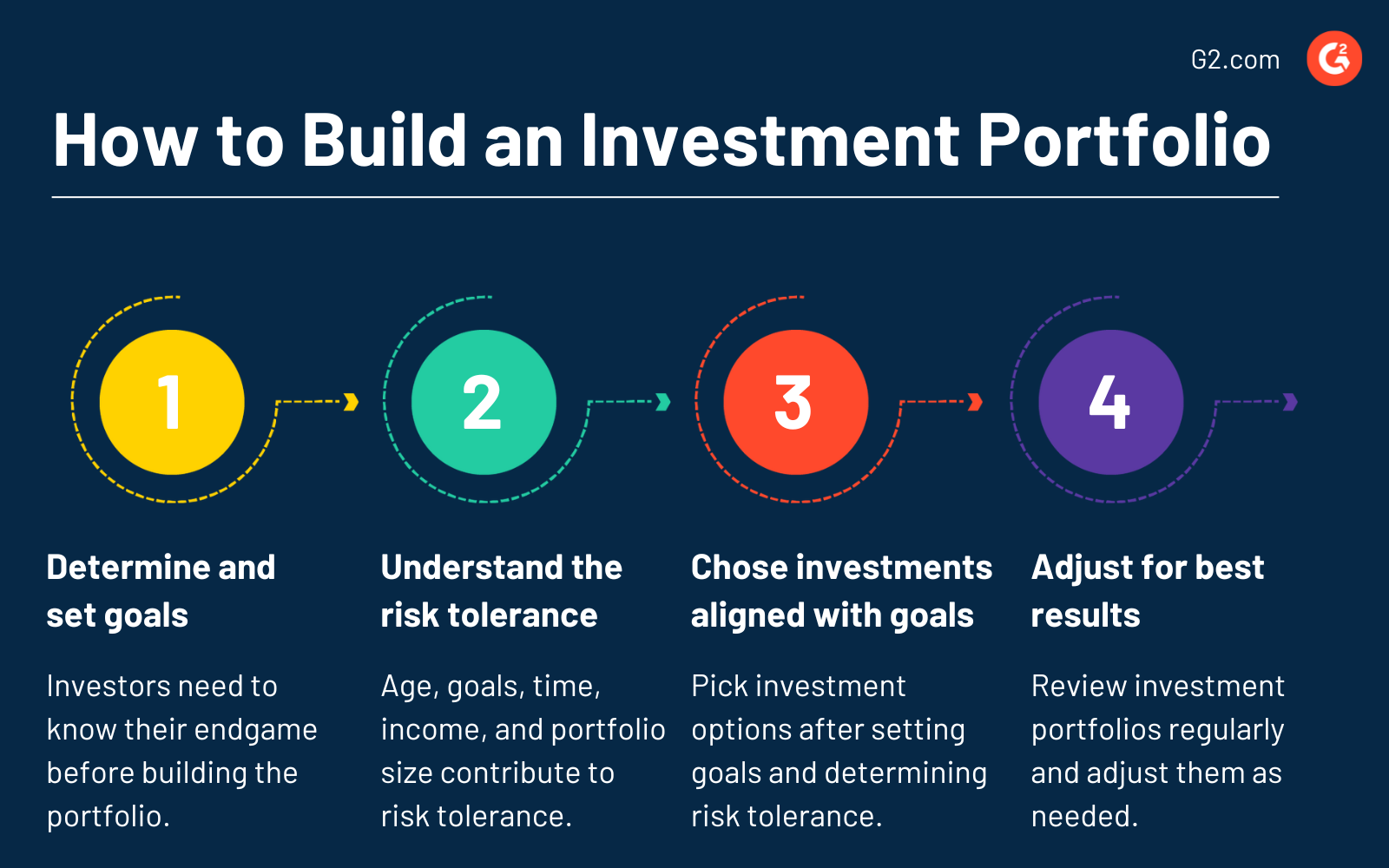What is an investment portfolio?
An investment portfolio is a collection of stocks, bonds, and other financial assets that are meant to achieve specific financial objectives such as capital growth, income generation, or some combination of returns and growth over time. Individuals or institutions can hold investment portfolios to meet their financial needs. They are a fundamental component of wealth management and financial planning strategies.
Investment professionals use investment portfolio management software to build, track, and manage investment portfolios for their clients. These systems generally include client-investor communication tools, investment records management, detailed reporting, and client portals to transfer funds and place orders.
Types of investment portfolios
Several types of investment portfolios are designed to meet specific financial goals and investment strategies. The choice of investment portfolio ultimately lies with the individual or institution’s objectives and financial plans. Some common types of investment portfolios include the following:
- An aggressive portfolio is a high-risk portfolio that aims to maximize returns while accepting a high degree of risk. One strategy aggressive investors may deploy is seeking out organizations in their early stages with the hopes that the company will take off. Aggressive portfolios typically include a high weight of equities and stocks.
- A defensive portfolio, also known as a conservative portfolio, is a low-risk investment for investors who want to protect their capital. Defensive portfolios work well for investors who wish to prioritize risk adversity or short investments. They may also want to focus on wealth preservation over maximizing returns. Some common assets within defensive portfolios include fixed-income, cash, and dividend-paying stocks.
- Income portfolios emphasize generating positive cash flow with a low-to-moderate risk. Investors lean into income-producing assets such as bonds, real estate investment trusts (REITs), master limited partnerships (MLP), and dividend stocks.
- Speculative portfolios carry high risk, intending to pursue aggressive capital growth. Speculative portfolios allocate significant assets to high-risk investments, such as initial public offerings (IPO) or stocks with growth potential. The technology industry provides many investment opportunities that support a speculative portfolio.
- Hybrid portfolios combine aggressive and defensive strategies to balance preserving and growing capital. Some common assets in a hybrid portfolio include stocks, bonds, and cash. Typically, a significant portion of the portfolio is allocated to income-generating assets. Hybrid portfolios work well for investors with a moderate risk tolerance since they’re willing to take on some level of risk.
How to build an investment portfolio
Building an investment portfolio requires planning, monitoring, and professional guidance. Portfolio development depends on an investor’s style and financial goals.

Future investors can follow the steps below to get started:
- Determine and set financial goals. When building an investment portfolio, investors must determine their financial goals. Investors need to know where their endgame is before building out their portfolio, whether it's income generation, capital preservation, or high-risk returns. As part of this process, it’s also important to consider the time needed to achieve the goals, as some investments may require significantly more to see a return than others.
- Understand the risk tolerance involved. Factors like age, investment goals, time horizon, income, comfort level, and portfolio size contribute to risk tolerance. Investors should be honest about their level.
- Choose investments that align with the financial goals. Investors must pick suitable investment options after setting financial goals and determining risk tolerance. Some examples of investment options include stocks, bonds, mutual funds, cash, and alternative investments like real estate.
- Monitor, rebalance, and adjust investments for the best results. It’s important to review investment portfolios regularly and adjust them as needed. Investment strategies may change with life, which means asset allocations may need to change to align with evolving goals.
Investment portfolio best practices
Effective portfolio management is strategic. Depending on numerous factors, it may or may not produce the desired outcomes. While investment portfolios vary across financial goals, all investors should keep the following best practices in mind.
- Diversify investments: The market is unpredictable. Diversified portfolios tend to be more resilient, so investors must consider how best to spread their investments across assets and industries for the highest likelihood of success.
- Conduct periodic reviews and regularly rebalance: Letting investment portfolios sit for too long without a thorough review is dangerous. Investors must review their asset allocation and rebalance if needed to ensure investments stay aligned with goals.
- Solicit help from investment professionals: Consider seeking advice from a financial advisor or investment professional. To reduce risks, those with limited investment experience may want to confirm their planning before diving in.
Risk tolerance is a critical part of effective investment portfolios. Understand the types of risk tolerance and how they might change over time.

Alyssa Towns
Alyssa Towns works in communications and change management and is a freelance writer for G2. She mainly writes SaaS, productivity, and career-adjacent content. In her spare time, Alyssa is either enjoying a new restaurant with her husband, playing with her Bengal cats Yeti and Yowie, adventuring outdoors, or reading a book from her TBR list.

